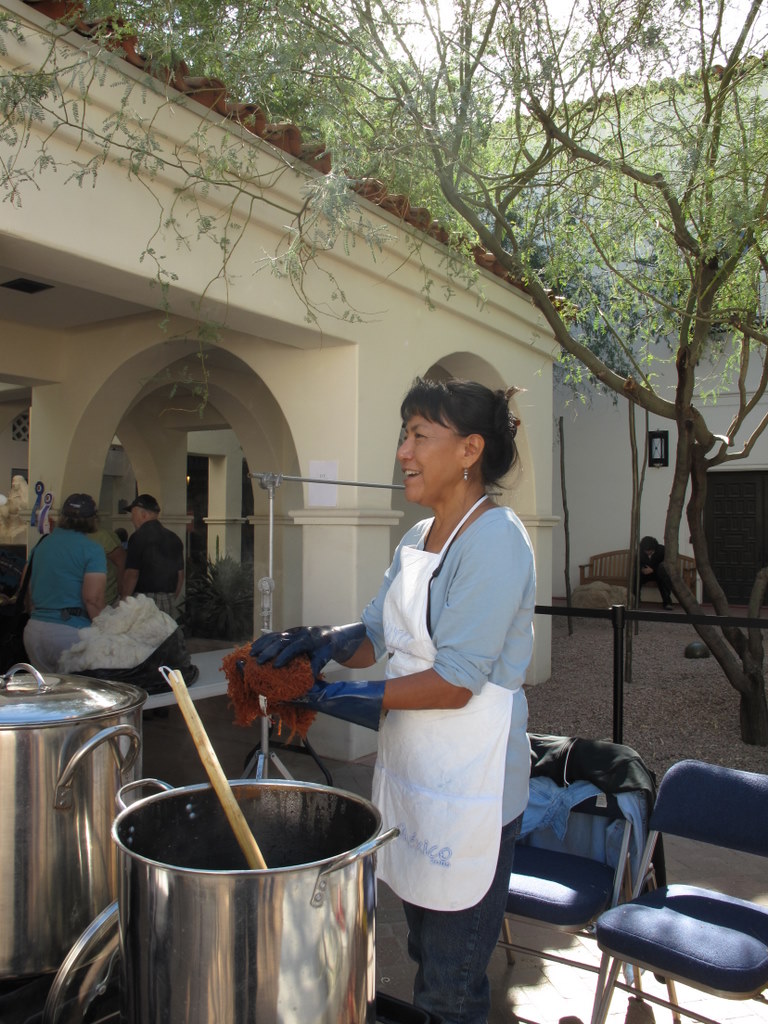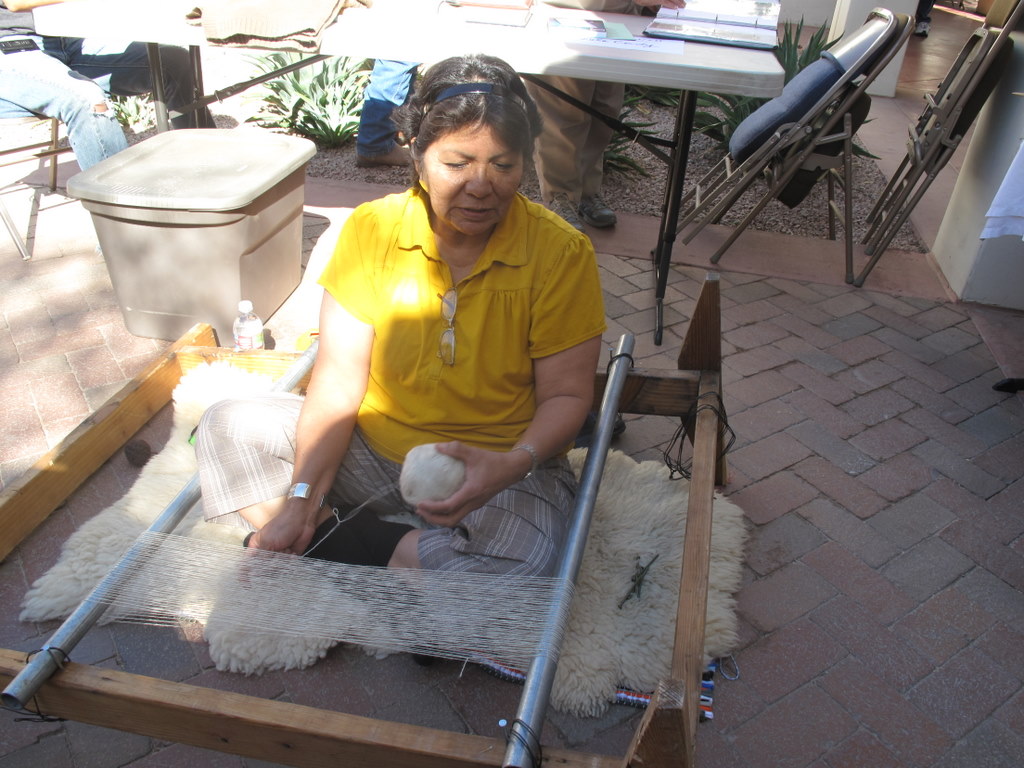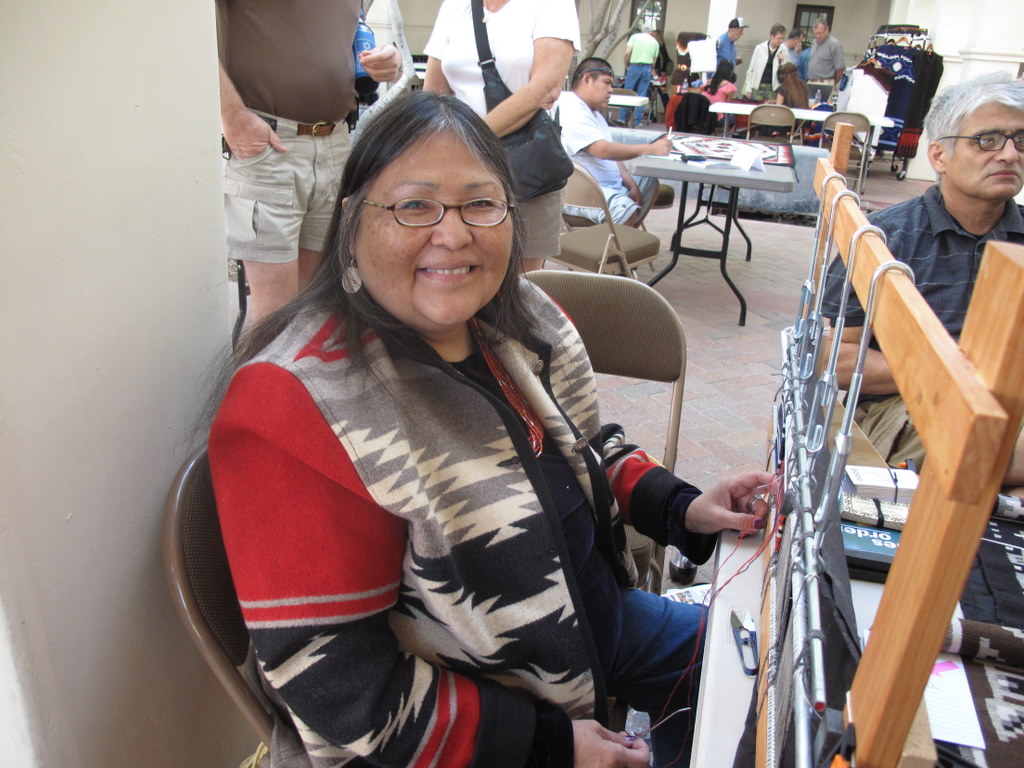2009 Gathering of Weavers Continued
Phoenix, AZ Moving down the Heard Museum’s courtyard at the Gathering of Weavers last Saturday, I smelled Navajo tea and then saw D.Y. Begay with her dyepots. Also called kota or greenthread, the Navajo tea plant is used to make a beverage as well as a dye for wool. Depending on the type of pot used, the mordant applied and the amount of time that the wool is processed, the plant yields colors ranging from gold to burnt orange. D.Y. was also processing some brazilwood and walnut hulls. Weavers who do their own dyes are always exploring the color potential of various plants. At a lecture that I attended on Saturday afternoon, Jackson Clarke told the audience about arranging to have Ella Rose Perry, a master weaver and dyer, do a demonstration for an event in Utah. Grandma Perry was way overdue and when she arrived she explained to a worried Jackson that she’d been stopping at various elevations to collect plants that she just could not get at home! A picture of a section of one of Grandma Perry’s rugs appears below. The gold color in this rug is Navajo tea. Look at how skillfully Ella Rose has used the Crystal weave in the striped areas of this rug.
Right behind D.Y.’s dye demonstration, Lola Cody was doing a warp the Navajo way. If you look carefully at the picture below, you’ll see that she’s using her loom as a warping frame and that she’s ensuring that she her warp dimensions are even by using pipes rather than dowels. What you can’t see as easily is that the warp is (now sit down) hand spun Navajo-churro wool. Fellow weavers, I am here to tell you that this warp was absolutely beautiful. That warp was so strong and evenly spun. Lola let me hold the ball in my hand and I knew that the courtyard was too crowded for me to make a clean getaway, plus there were a bunch of people there who knew me and I want to stay friends with Lola. I handed the warp back to her. Yep, I’m going to try spinning my own warp.
Barbara Jean Teller Ornelas was working on a matched set of four tapestry grade miniature Chief Blankets. When it’s complete, the set will include two First Phase patterns, a second phase and a Third Phase.
You’ll want to see Barbara’s work and her loom set up in the picture below. You’ll see that the First Phase blanket pattern (left) is composed of stripes and the Second Phase adds nine carefully placed blocks that would line up when worn. The Third Phase piece will have diamond design elements in place of the blocks. These small pieces will have about 100 weft threads to the inch.
We’ve worked our way down one side of the courtyard, but there are some new weavers for us to meet tomorrow and you’ll also be interested in some of the rugs that Jackson Clarke and Mark Winter discussed in their talks on Saturday afternoon. Look for that update on Wednesday; I’m helping with a weaving class tomorrow weaving. If you’re near the Fiber Factory in Mesa, AZ, stop by and say hello.
Hagoshíí (so long for now)
Mary Walker



